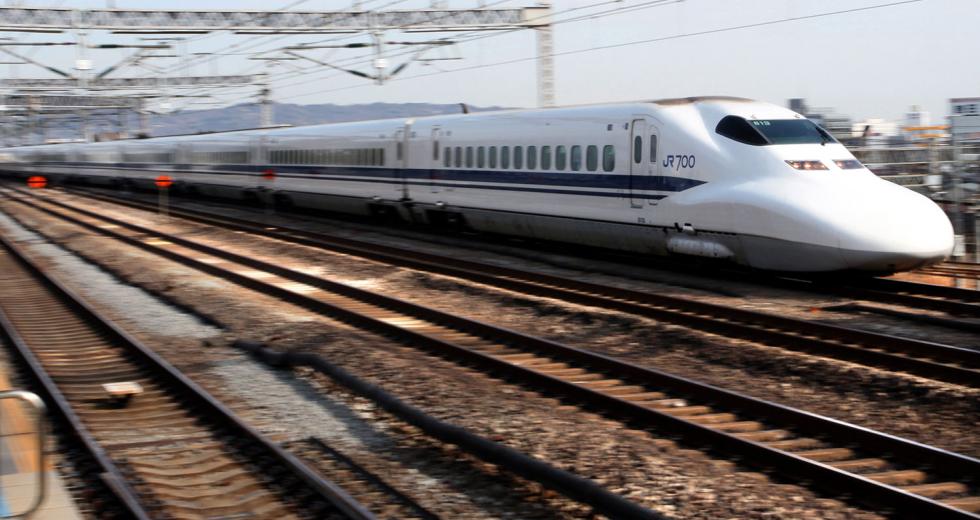California is counting on private companies to kick in as much as $35.5 billion toward the most expensive public-works project in U.S. history, a proposed high-speed rail line linking San Francisco with Los Angeles. Banks and other contractors who’ve studied the plan say not so fast.
Even as builders clear land and begin work on viaducts near Fresno for the bullet train’s initial segment, financiers solicited by the state rail agency are calling on California to pitch in more than the $10 billion in bond funds already committed in order to give potential investors confidence that the project will become reality.
Their responses point out a dilemma for Democratic Governor Jerry Brown and other supporters of the line: persuading reticent taxpayers to ante up more than already approved under a 2008 bond measure as support for the project declines, though private investors may stay away unless they see a bigger public buy-in.
“We still have a funding gap,” rail authority chairman Dan Richard said at an Oct. 6 board meeting at which officials outlined responses from 36 firms and groups of companies asked to outline potential funding packages. “But we’re going to build this project notwithstanding that, because we can close that funding gap.”
Barclays Plc, AECOM and Kiewit Corp. were among the builders, lenders and contractors who responded to the California High-Speed Rail Authority’s request for expressions of interest by companies. The authority released the responses under a public-records request.
Large Financing
“Given the proposed delivery approach and available funding sources, we believe there are a number of concerns which the authority must address,” Kiewit, which reported $10.4 billion in revenue last year, said in its response. “The ability to service raised financing does not mean that such a large financing amount could in fact be raised.”
Backers of the train are counting on the private sector to finance most of the costs, after voters in 2008 authorized $9.95 billion in general-obligation bonds. Other sources of money include $3.2 billion in federal grants and 25 percent of the proceeds from auctioning credits to emit greenhouse gases under the state’s cap-and-trade program, which is estimated to yield the project $500 million a year.
Brown spokesman Evan Westrup did not immediately respond to an e-mail asking whether the state could increase its funding pledge. Lisa Marie Alley, spokeswoman for the rail authority, said the responses from the firms confirmed that “ridership and revenue would be available once the system is in operation and revenue is demonstrated.”
Critics including Congressman Jeff Denham, a Turlock Republican who represents an agricultural area to be bisected by the rail line, have called the project a “boondoggle” that will run out of money before it reaches population centers. Construction is under way in the lightly populated San Joaquin Valley on the first 29 miles (47 kilometers) of what’s envisioned as an 800-mile network with trains speeding as fast as 220 miles per hour.
Richard said that the state is constrained because the 2008 ballot measure approved by 53 percent of voters allowed only for $10 billion. Several polls since then have shown support for the project slipping below 50 percent.
Boost Commitment
Even so, the state and federal governments need to boost their commitment both to narrow the funding gap and persuade investors that the train will pay dividends, several companies said in their responses to the authority.
As of 2012, there were no similar projects anywhere in the world where the government paid less than half of the cost, according to John Laing Group Plc, a London-based investor and manager of infrastructure projects, including rail in its home country.
“Thus, we would anticipate the project would require comparable levels of capital contributions during construction,” the company said.
AECOM suggested that the state break down financing into a series of smaller segments of no more than $5 billion to attract investors. The Los Angeles-based infrastructure company also advised “significant” government contributions.
The state should be able to borrow $10 billion to $12 billion against the annual cap-and-trade revenue, Barclays said. The London-based bank invested in a high-speed rail project in South Africa that linked Johannesburg and Pretoria in 2010, and has underwritten municipal bonds in California.
Legal Challenges
California will need to prevail in legal challenges against devoting cap-and-trade proceeds toward rail, create a mechanism to borrow against the proceeds, extend the carbon-trading program beyond 2020 and lock in a 25 percent commitment of the revenue for high-speed rail as long as the obligations are outstanding, Barclays said.
California also would need to subsidize operations for at least a decade, according to Cintra Infraestructuras SA, a subsidiary of Ferrovial SA, a Spanish builder of roads, rail and airports in Europe, North America, Australia and the Middle East.
“It is doubtful that there is enough capacity in the debt markets for this type of project,” Cintra concluded.



